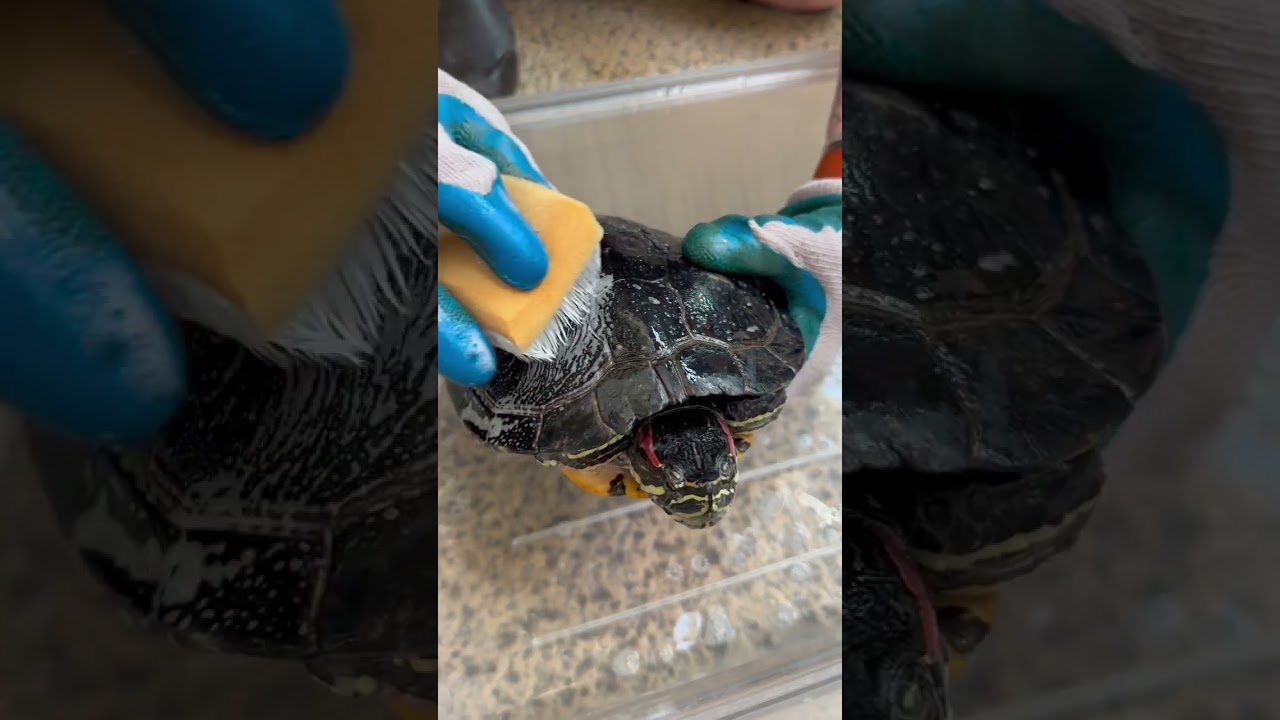- Understanding the Habits and Characteristics of Raphael the Red-Eared Slider
- The Importance of Self-Care for Turtles and Its Impact on Their Health
- Management Practices in Captivity: Enhancing Well-being and Longevity
- Conservation Efforts and Challenges for Red-Eared Sliders in the Wild
- The Role of Public Education in Promoting Wildlife Conservation
Raphael, the red-eared slider turtle, is an intriguing creature that lives both in natural and captive environments. Known for their distinctive red marks around their ears, these turtles are popular among enthusiasts and serve as valuable subjects for wildlife education and conservation.
Understanding the Habits and Characteristics of Raphael the Red-Eared Slider
Red-eared sliders are semi-aquatic turtles recognized by their olive-green skin and notable red stripes by their eyes, which make them easily identifiable. They are typically found in the southeastern United States but have become global residents due to pet trade and unregulated releases.
Raphael, a captivating red-eared slider, exhibits behaviors typical to his species. These turtles spend a substantial portion of their lives basking in the sun on rocks and logs. This behavior is essential for thermoregulation and vitamin D synthesis, which are critical for shell and bone health.
Their diet in the wild consists of aquatic vegetation, small fish, and various invertebrates. As omnivores, their dietary needs change with age, requiring a balanced intake of protein, vitamins, and minerals. Juveniles are more carnivorous, transitioning to a herbivorous diet as they mature. Understanding this dietary shift is vital for proper management in captivity.
The Importance of Self-Care for Turtles and Its Impact on Their Health
Raphael’s disinterest in spa-like conditions might seem relatable to some human personalities, yet self-care, even for turtles, is crucial. Self-care in turtles involves routine behaviors such as basking, shedding, and hunting. These actions aren’t merely for comfort; they are vital to the reptile’s overall health.
Basking allows Raphael to regulate his body temperature and prevents fungal infections. Shedding assists in removing parasites and maintaining healthy skin. Providing opportunities for these activities in captivity is essential. Conversely, neglecting these needs can lead to health issues such as metabolic bone disease and shell rot.
Preventative care through regular health checkups and habitat maintenance also significantly contributes to a turtle’s well-being. Monitoring water quality, tank temperature, and diet helps maintain balance, preventing stress and disease.
Management Practices in Captivity: Enhancing Well-being and Longevity
Effective zoo management practices are fundamental to ensuring the health of red-eared sliders like Raphael. Enclosures must mimic natural habitats to encourage species-specific behaviors. A variety of temperature zones, basking sites, clean water, and dietary provision are all critical aspects.
The integration of environmental enrichment can improve mental and physical health. Simple measures like introducing live fish for hunting practice or varying the layout of their habitats can stimulate engagement and natural behavior. These practices combat the boredom that can occur in confined spaces.
Experienced caretakers regularly assess Raphael’s health through observation and veterinary examinations. They check for signs of illness such as a lack of appetite, lethargy, or abnormal growth. Such vigilance is necessary to detect potential issues early, promoting longevity and vitality.
Conservation Efforts and Challenges for Red-Eared Sliders in the Wild
While Raphael enjoys the sanctuary of a managed environment, wild red-eared sliders face numerous conservation challenges. Although not currently endangered, their popularity in the pet trade has led to their introduction in non-native areas, posing environmental concerns.
Invasive populations can disrupt local ecosystems, competing with native species for resources and spreading diseases. Conservation efforts include regulating pet trade practices and controlling released turtle populations. Educating the public about responsible pet ownership is key to reducing unintended introductions.
Habitat destruction is another threat, as wetlands are drained or polluted. Conservation organizations work to preserve these habitats through advocacy and restoration projects, ensuring that turtles like Raphael have a home in the wild.
The Role of Public Education in Promoting Wildlife Conservation
Engagement with the public plays a vital role in conservation strategies. Zoos and aquariums, home to turtles like Raphael the red-eared slider, are pivotal in educating visitors about the species and broader conservation issues. Programs and exhibits can raise awareness of the challenges faced by wildlife and inspire action.
Hands-on experiences and interactive displays allow visitors to connect with turtles personally, fostering a sense of stewardship. Educators emphasize the importance of biodiversity and ecosystem health, encouraging community involvement in conservation efforts.
Overall, consistent engagement and education initiatives have the potential to make a significant impact by encouraging informed attitudes and actions towards wildlife conservation. In conclusion, the story of Raphael the red-eared slider showcases the interconnectedness of care, management, and conservation practices necessary to safeguard these remarkable reptiles for future generations.
*****
Source Description
In the wild, they scrub on rocks. At Audubon Aquarium, our team gives Raphael gentle shell scrubs to keep him healthy and buildup-free. 🐢 🧽 #audubonaquarium #turtle #turtlebath #spaday #neworleans


